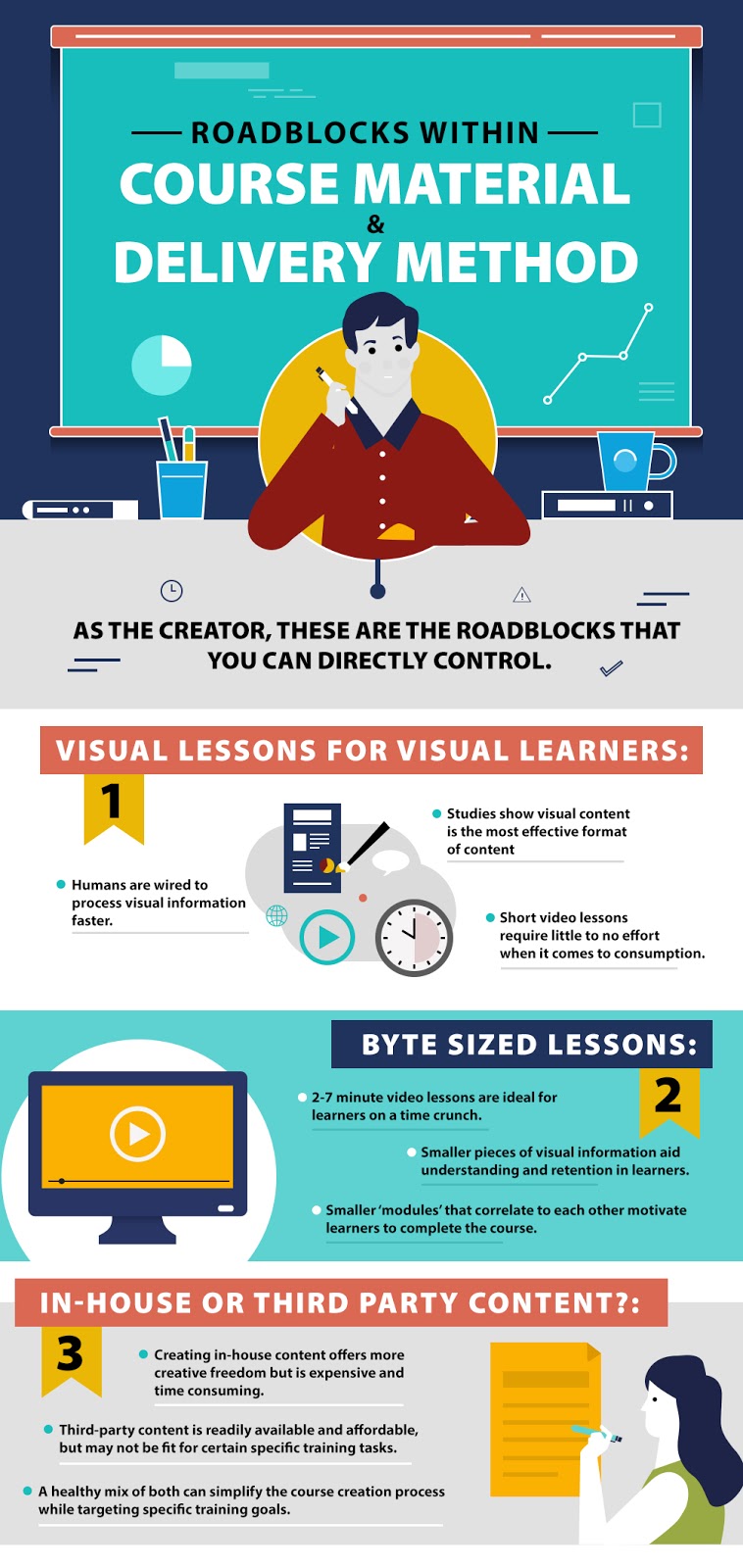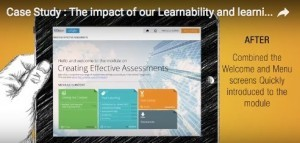How To Improve The Effectiveness Of Your Online Course - A Definitive Guide
With 46 million new online learners between 2015 and 2017, several thousand are motivated to create and sell courses. However, as the population of online courses on the web grows, the completion rates are declining at an alarming rate.
Sure, sign up rates are a lucrative metric to measure success. However, completion rates are the true reflection of the value that a course delivers - think reviews, shares, verbal and formal accreditations.
The average completion rate for (MOOCs) is less than 10%. As the industry matures, completion rates will become the metric of choice for customers assessing the best course for their needs.
Maximising the impact your course makes has become vital, and here’s how you can do exactly that:
Rethinking Your Priorities
While making money is surely an important motivation for creating a course, the benefit will be the reason it sells.
What will the learners get out of your course? What will they learn after they spend precious hours of their lives consuming your course material?
The purpose of a course is to enable the learner to do awesome and valuable things. Customer success should be at the top of your priority list. Remember, positive word-of-mouth is the best form of marketing.
Select a definitive result that you will help your learners achieve. For instance, at the end of a SEO course, the learners will know how to optimise their business website for better search engine performance.
Identifying Roadblocks
What is preventing your learners from achieving success? There are some roadblocks that are directly in your control as the creator of the course. However, there are other extremely influential roadblocks that course creators have no control over. Let’s find out about both in the sections below:
Roadblocks within course material and delivery method
As the creator, these are the roadblocks that you can directly control.
Studies have found that video content is the most effective format when it comes to course content. 73% of Learning Management System users use a mix of in-house and third-party video content. In fact, this mix has been found to be the most effective in the case of employee training programs.

It is important to ensure your course content contains precise, useful, and succinct information that the learners can apply in practical life.
Similarly, when you design different ‘modules’ or ‘lessons’ for your course, it is important to make sure they are structured to aid efficient understanding.
The flow between these modules is equally important to ensure retention and understandability. World-class course content is the most critical element in the success of your learners, and your course.
This is a great post about creating quality course content.
Roadblocks for individual students
No matter how well presented your content is, you can never really help a student with little motivation. However, other personal factors, such as lack of time, concentration, can be influenced by introducing some smart changes to your course structure.
Let’s look at the solutions of each of these challenges in more detail:
Lack of time
A common prevalence among corporate learners is lack of time. As a creator, you can deal with this roadblock by employing Micro-learning practices. When you create a module, try to further break it down into easily consumable chunks of information. For video lessons, the ideal length should be between 2 and 7 minutes. Bite sized pieces of information are not only easy to consume and retain for learners, these also enable the creators to track the progress of learners with precision.
The scope of micro-learning is not limited to instructional videos or articles. Quick quizzes and questionnaires that can help the learners track their progress.
Another easy way to combat the shortage of time is to introduce more flexibility to your course. Let’s continue with our SEO course example. If, at the end of the week, I want my learners to create a website, I will give them the task list involved at the beginning of the week. This way, they can complete the tasks during the week whenever they can find time. Similarly, making live webinars downloadable will ensure even those who miss the live broadcast never miss out on an important lesson.
Lack of concentration/motivation
While there is no way to have a definite impact on a learner’s motivation to learn, there are ways to incentivise the learning process itself. A common marketing practice, called the Endowed Progress Effect, can be effectively employed here.
 Source
Source
In simple words, the Endowed Progress Effect states that when a person feels that they have made progress towards an objective, they make more efforts to achieve said objective.
An easy way to introduce this effect in your course is to plan an easy-to-complete activity at the beginning and end of each learning module. As the course progresses, you can increase the complexity and difficulty levels of the activities. By having completed easier activities, your learners will be motivated to keep performing and progressing towards the ultimate objective.
Another way to instill some motivation is to offer a certificate at the end of a course. A certification will turn arbitrary ability into a quantifiable achievement. The benefits of a certification are not limited to more motivation, but extend into professional applications as well.
Offering students an overview of the whole course in the first module will also improve chances of success. Similarly, a downloadable database of learning resources can help students reaffirm their knowledge. For slow learners, this database can enable them to keep up with the rest of the class and remain prepared before the start of each new lesson.
Improving Communication
While online courses are meant to be self-paced when the lectures or modules are available to the students to undertake whenever they see fit, they can never fully replace a human teacher.
When you improve communication between learners and teachers, you are introducing a much-needed human element to your course. Teachers can help learners identify problem areas and suggest personalised solutions that aid improvement.
This can be taken a step further by building a student forum for your course. A forum can be a great resource of solutions for the most common problems, while offering the learners a platform to discuss and solve their unique issues. This way, even when a teacher is not readily available, a student can enlist help of a fellow learner and it can be easily ensured that the learners receive the help or support they need to keep making consistent progress. A collaborative environment might be just the thing your learners need to achieve definite success.
Understanding Learnability
Learnability, as the name suggests, is the measure of the ease with which learners can acquire and retain the knowledge being offered through a course. Only courses that offer a high learnability can truly benefit the learners.
While calculating learnability can be a challenge due to the fact that it can be influenced by a number of factors. Moreover, the importance of factors being taken into consideration may vary with different courses and learning styles.
To begin improving the learnability of your online course, you can refer to the following common factors that affect learnability:
Factors That Affect Learnability
User Interface:
In the case of an online course, user interface refers to the ease with which learners can find, understand, and apply a piece of information.
Content Structuring:
Do different lessons build on each other? A content structure that builds on previously learned information will aid better understanding of concepts.
Design Elements:
The design elements within your course, including the visual learning cues should add to the learning experience and not act as a distraction.
Interactivity:
Unlike college lectures, online courses need to be interactive to ensure engagement. Concepts learnt through experiences have a better chance of finding real life applications.
Bottom line, courses with good learnability will put the key content in the spotlight, and all other elements of the course will contribute to simplify the consumption of your content, and the completion of the tasks involved within the course.
Feedback
Using the learnability metrics mentioned in the previous section, creators can obtain real time feedback from the learners. This feedback will:
Enable you to better analyse various learnability aspects of your course.
Gain real insight that matters to improve learnability of future courses.
Validate the current impact of your online course.
Improve your instructional design to motivate learners to complete the course.


Conclusion
In conclusion, I would like to remind the readers that improving the effectiveness of your course doesn’t necessarily mean modifying every element within. If you have already created a course that some learners have completed, it is best to start with their feedback.
With the intelligence you gain from said feedback, you will be able to easily identify areas within your course that require improvement, and act upon them.



